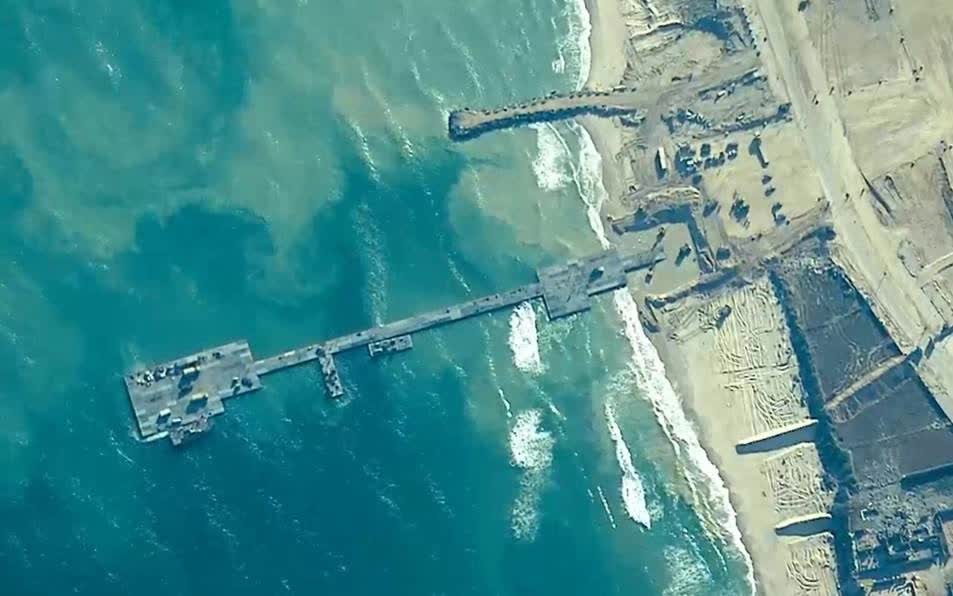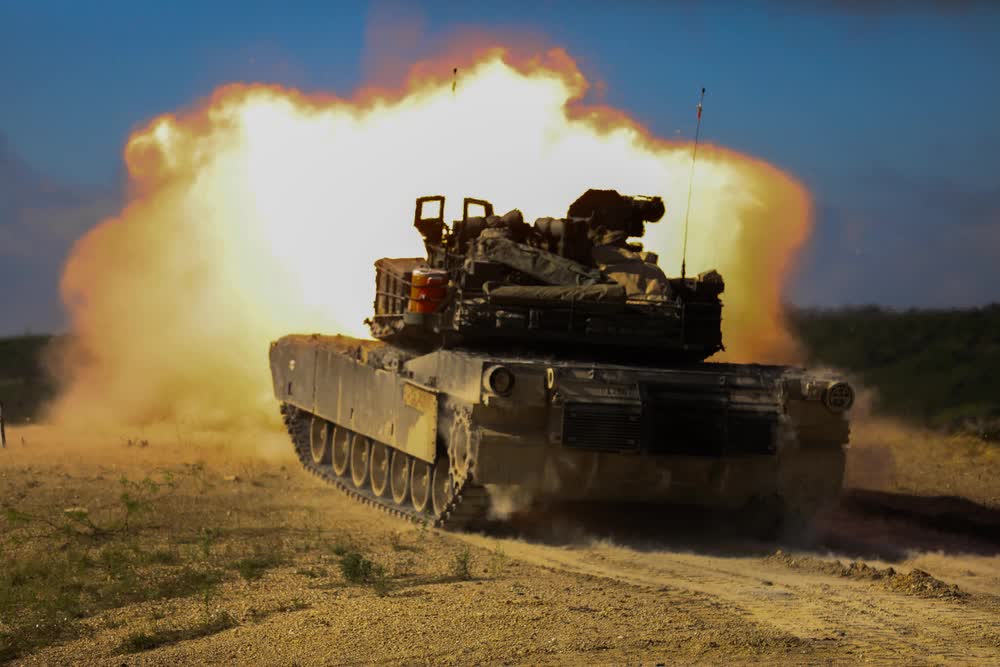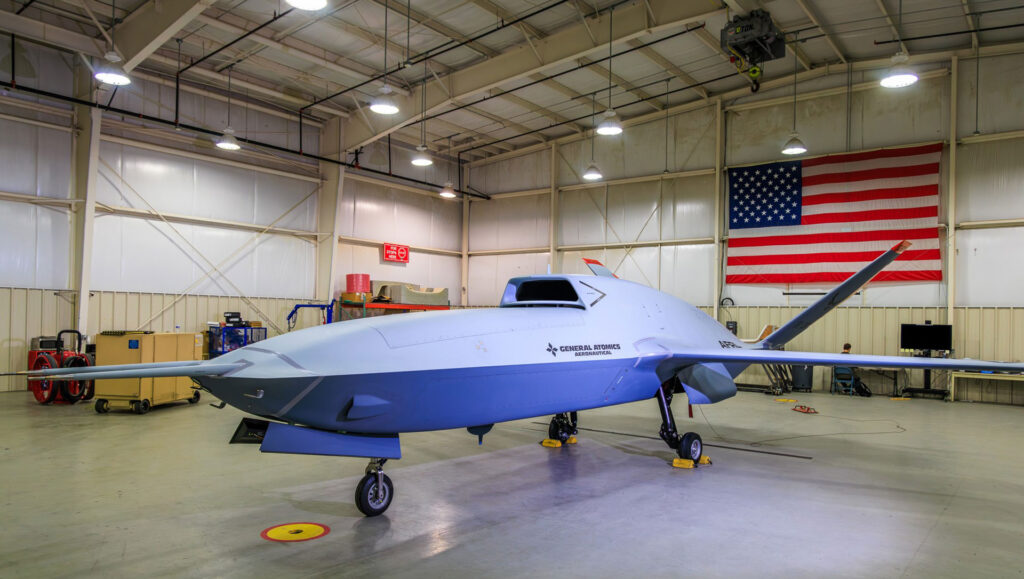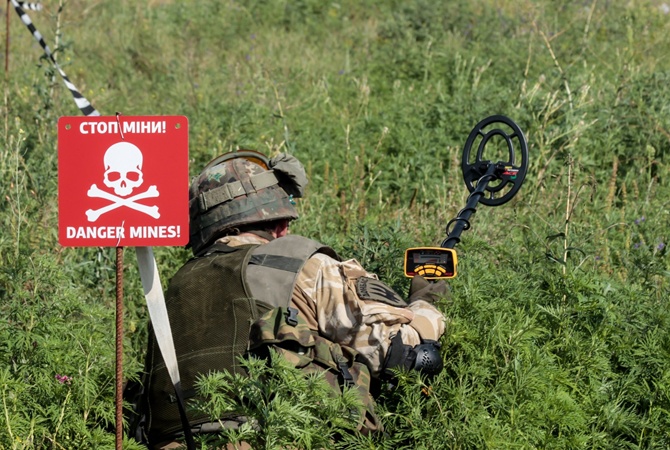Editor’s Note: This aricle has been updated to mention the pier breaking apart due to heavy seas.
The U.S. Army and the sea are two terms that don’t often appear in the same sentence.
After all, the Navy – and for that matter, the Marine Corps – exist to ensure Soldiers don’t need to get their feet wet. But the pier and causeway rapidly constructed off the coast of Gaza in the Mediterranean Sea to deliver humanitarian assistance to Palestinians under siege don’t represent the service’s first foray into building maritime delivery structures. Not only has the service been honing this skill for decades, but also has a dedicated coastal research facility and test pier that enable research on surf conditions and ship-to-shore transfers.
The pier off Gaza, which was declared complete in late May, is an engineering marvel in its own right. Its construction was first publicly mentioned in March, when President Joe Biden announced plans for the pier in his annual State of the Union address.
The temporary pier, Biden said, would need to be able to receive “large ships carrying food, water, medicine and temporary shelters.”
“No U.S. boots will be on the ground,” Biden added. “This temporary pier would enable a massive increase in the amount of humanitarian assistance getting into Gaza every day.”
Construction on the pier began in late April, according to Pentagon releases. A joint Army-Navy venture, the project involved 1,000 troops and included the building of a 72-foot by 270-foot roll-on, roll-off cargo ship discharge facility three miles offshore to enable the offload of aid packages, and a 1,800-foot modular causeway to move the aid to land. Large ships will stop at the discharge facility, where packages will be loaded into smaller boats that will carry them to the end of the pier connected by the causeway to shore. The causeway system will transport up to 150 truckloads of international aid per day, Defense Department officials say.
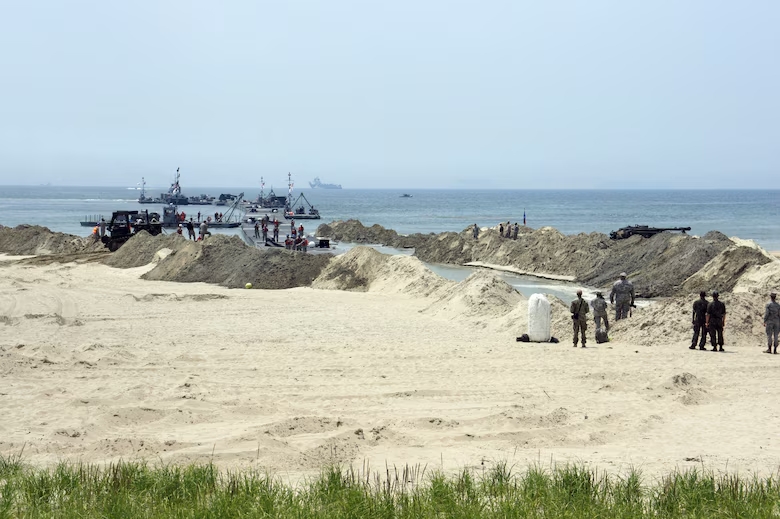
On May 16, military officials announced that the all-hands pier project had been completed. Days later, disheartening news followed: while 569 metric tons of aid had been delivered via the causeway system, chaos and violence onshore had prompted a pause in distribution. Pentagon spokesman Brig. Gen. Pat Ryder told reporters he didn’t believe any aid had reached Palestinians in need.
While the military works with entities on the ground to create safe conditions for aid distribution, it’s worth appreciating the rapidity and effectiveness of the floating pier enterprise. The Defense Department calls this line of effort Joint Logistics Over the Shore, or JLOTS.
“JLOTS operations have been a part of the U.S. military’s strategy since its inception and were used in theaters such as Vietnam, Grenada, Panama, and Iraq,” military officials said in a 2020 release describing the concept. “They provide required operational maneuver capabilities in areas of anti-access or area denial (A2/AD) environments and allow for movement of a heavy force.”
The construction is managed by the Army Corps of Engineers (USACE), which oversees major infrastructure projects not just for the Army but for the entire United States: hundreds of dams and bridges nationwide are under USACE supervision and maintenance.
The Modular Causeway System (MCS) and temporary “Trident Pier” configuration are USACE core competencies for when conditions on shore aren’t conducive to directly offloading big shipments. However, they can also be used to supplement overwhelmed existing discharge facilities because they work so well to transport big loads of equipment fast.
Related: And you have my axe: The American lumberjacks of World War I
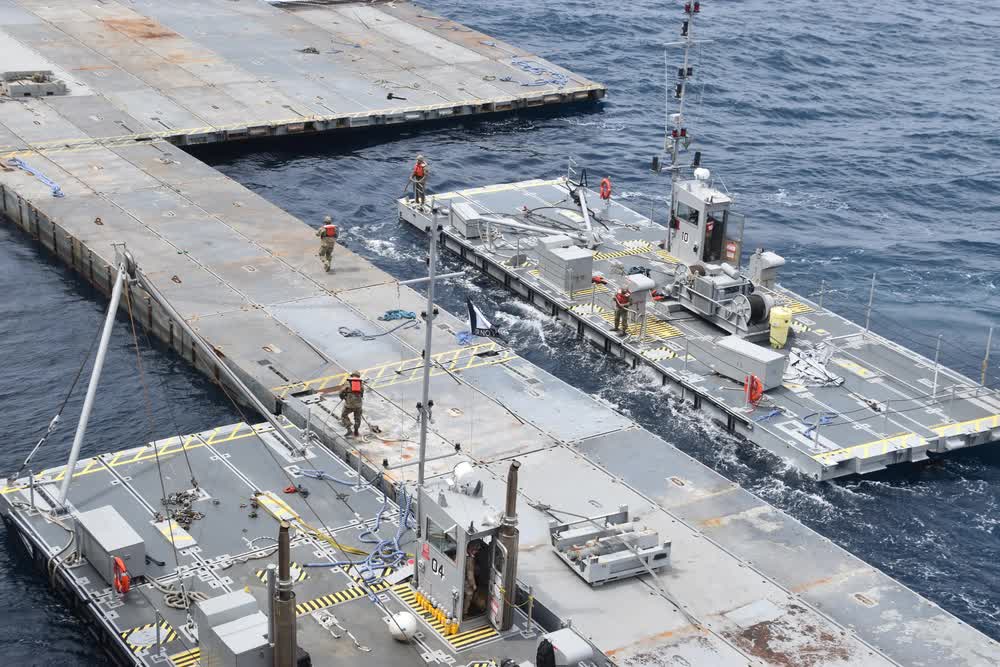
Practically speaking, the piers are made by hauling 20- and 40-foot pieces of medal “floor” one by one via tugboat into place on the line, securing them with large steel fasteners and anchors before bringing the next piece around. It sometimes can be dangerous work.
“When the sea gets rough, you have to time your movements so you don’t fall in between pieces that bang together like giant scissors going up and down in the waves,” an enlisted Soldier said about a 2013 exercise in which a transport company built a temporary causeway off the coast of South Korea. “Setting anchors is very hazardous with big, heavy things swinging around. We have to keep them steady,” the Soldier added.
Indeed, due to heavy seas, sections of the floating pier broke apart on May 28, according to the Pentagon. The pier has currently been removed from Gaza for repairs that are estimated to take over a week. According to CNN, the pier can be operated safely in winds of up to 15 miles per hour and waves up to three feet.
As USACE experts explain, building effective and usable modular causeways is not just a matter of laying down enough components to stretch from pier to shore. Engineers must also evaluate the state of the sea and determine how the chop will affect the structure – and when it’s safe to use it. Expanding the parameters for using the modular causeway system is an ongoing effort for the Army Corps, and one that is becoming increasingly important as the U.S. military plans for a future war in the Pacific, where the ocean will be a major factor.
Enter the Army’s Coastal and Hydraulics Laboratory – a little-known facility located at Kitty Hawk, in North Carolina’s Outer Banks. While the area is better known as a setting for Nicholas Sparks romance novels, Army engineers use the space to study, among other things, surf conditions and the impact of waterways and factors like corrosion and sediment on tactical structures.
Related: The Navy’s plan to keep its warships in the fight: Rearming at sea
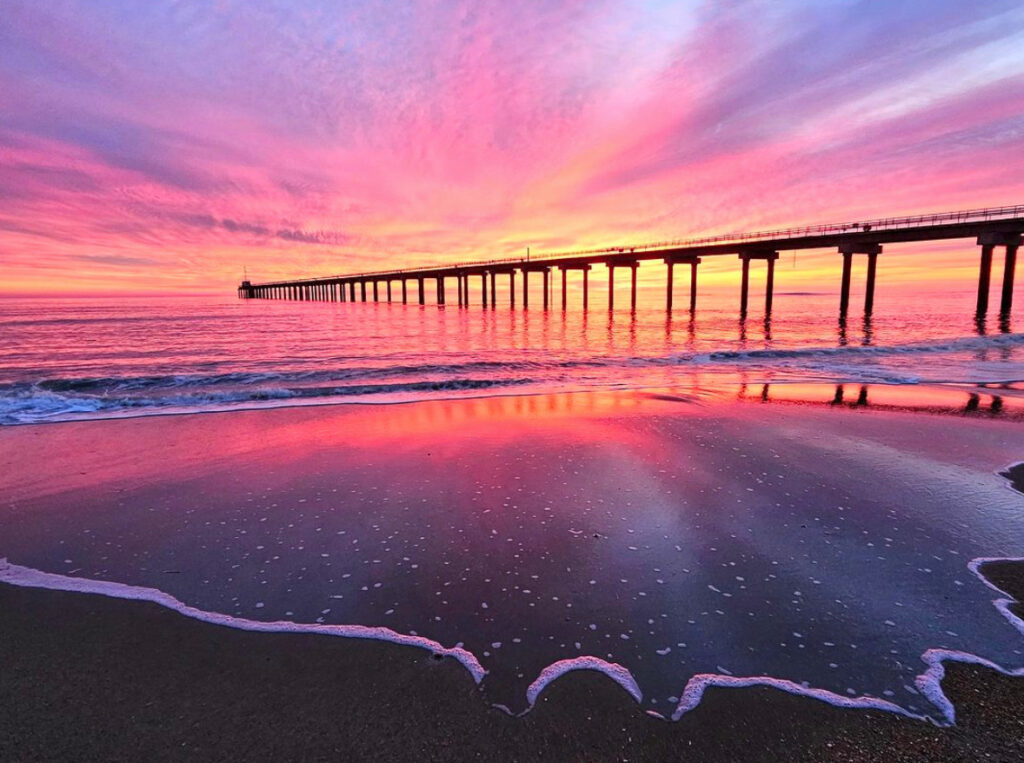
According to USACE, the work of the facility, which opened in 1977, has made its chunk of the Atlantic shoreline the world’s most studied piece of beach and surf. Much of the center’s work involves a 1,840-foot pier – about the size of the one now stretching into Gaza – that facilitates sensing and research. Inside the facility is more bespoke research equipment, including a $3 million ship simulator complex for navigation studies and towing tests.
While much of the lab’s work doesn’t make headlines, a 2020 experiment put a modular causeway through its paces, using software the lab had developed to show how the causeway would respond to changing sea states during equipment transport and at various stages of assembly, like the “stabbing” action of securing the end of the causeway to the beach.
“We are providing additional data for the warfighter to help shape the guidance on determining beforehand where and when to deploy the Modular Causeway System,” Dr. Gaurav Savant, a research hydraulic engineer lab and lead for modular causeway modeling, said in a release about the effort. “We are going to provide states of the MCS when it’s in the ocean, in the process of going on the beach, and when it actually hits the beach,” he added.
While the famously landlocked Afghanistan provided few opportunities for constructing modular causeways, JLOTS exercises have been a regular part of military training over the last few decades. With maritime and littoral operations in area-denial environments consuming current military playbooks, JLOTS may someday become a much more regular part of real-world tactical operations.
Read more from Sandboxx News
- These are the 5 best service rifles the US military has ever had
- 3 pieces of special operations gear that give troops ‘super powers’
- This 60-year-old plane is moving the Marine Corps’ warfighting strategy into the future
- This is why a SEAL Team 6 member uses the odd Taurus Judge revolver
- Game-changing military aircraft that were canceled before they could change the game
